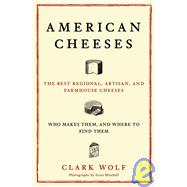
| Introduction: Learning to Taste | p. 1 |
| What Kind of Food Is Cheese? | p. 8 |
| How Cheese Happens | p. 10 |
| Specialty, Artisan, and Farmstead Cheeses | p. 12 |
| How to Buy, Store, and Serve Cheese | p. 14 |
| The Families of Cheese | p. 21 |
| How Much Is That Goat Cheese in the Window? (or, Take Me to Your Liter) | p. 26 |
| This with That: Accompaniments and Pairings | p. 32 |
| What the Heck Is Rennet? | p. 34 |
| It's a Process | p. 35 |
| Intolerance | p. 36 |
| Wrapping, Rinds, and Ripening | p. 38 |
| My Favorite Cheesemongers | p. 40 |
| Hotbeds and Bastions of Cheese Culture | p. 43 |
| The Northeast and New England | p. 45 |
| The South | p. 107 |
| The Middle West | p. 147 |
| The Wild West | p. 183 |
| Awards, Accolades, and Endorsements | p. 253 |
| Awards | p. 254 |
| Resources | p. 255 |
| Festivals | p. 256 |
| Metric and Other Equivalencies | p. 257 |
| Index | p. 259 |
| Table of Contents provided by Ingram. All Rights Reserved. |
The New copy of this book will include any supplemental materials advertised. Please check the title of the book to determine if it should include any access cards, study guides, lab manuals, CDs, etc.
The Used, Rental and eBook copies of this book are not guaranteed to include any supplemental materials. Typically, only the book itself is included. This is true even if the title states it includes any access cards, study guides, lab manuals, CDs, etc.